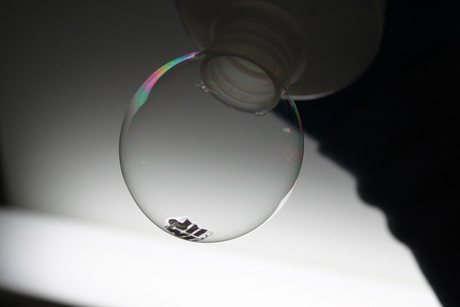Solar cells for next-gen portable electronics

New proof-of-concept solar cells, developed by researchers at MIT, could help power the next generation of portable electronic devices.
The key to the new approach is to make the solar cell, the substrate that supports it and a protective overcoating to shield it from the environment, all in one process, said MIT professor Vladimir Bulović.
The substrate is made in place and never needs to be handled, cleaned or removed from the vacuum during fabrication, thus minimising exposure to dust or other contaminants that could degrade the cell’s performance.
“The innovative step is the realisation that you can grow the substrate at the same time as you grow the device,” Bulović said.
In this initial proof-of-concept experiment, the team used a common flexible polymer called parylene as both the substrate and the overcoating, and an organic material called DBP as the primary light-absorbing layer.
Parylene is a commercially available plastic coating used widely to protect implanted biomedical devices and printed circuit boards from environmental damage. The entire process takes place in a vacuum chamber at room temperature and without the use of any solvents, unlike conventional solar-cell manufacturing, which requires high temperatures and harsh chemicals. In this case, both the substrate and the solar cell are ‘grown’ using established vapour deposition techniques.
The team emphasises that these particular choices of materials were just examples, and that it is the inline substrate manufacturing process that is the key innovation. Different materials could be used for the substrate and encapsulation layers, and different types of thin-film solar cell materials, including quantum dots or perovskites, could be substituted for the organic layers used in initial tests.
To demonstrate just how thin and lightweight the cells are, the researchers draped a working cell on top of a soap bubble, without popping the bubble. The researchers acknowledge that this cell may be too thin to be practical — “If you breathe too hard, you might blow it away,” said doctoral student Joel Jean — but parylene films of thicknesses of up to 80 microns can be deposited easily using commercial equipment, without losing the other benefits of inline substrate formation.
A flexible parylene film, similar to kitchen cling wrap but only one-tenth as thick, is first deposited on a sturdier carrier material — in this case, glass. Figuring out how to cleanly separate the thin material from the glass was a key challenge, said research scientist Annie Wang, who has spent many years working with parylene.
The researchers lift the entire parylene/solar cell/parylene stack off the carrier after the fabrication process is complete, using a frame made of flexible film. The final ultrathin, flexible solar cells, including substrate and overcoating, are just one-fiftieth of the thickness of a human hair and one-thousandth of the thickness of equivalent cells on glass substrates — about two micrometres thick — yet they convert sunlight into electricity just as efficiently as their glass-based counterparts.
“We put our carrier in a vacuum system, then we deposit everything else on top of it, and then peel the whole thing off,” said Wang.
The researchers used a glass carrier for their solar cells, but since the processing takes place under such benign conditions “you could use almost any material”, Jean said. The substrate and solar cell could be deposited directly on fabric or paper, for example.
While the solar cell in this demonstration device is not especially efficient, because of its low weight, its power-to-weight ratio is among the highest ever achieved.
That’s important for applications where weight is important, such as on spacecraft or on high-altitude helium balloons used for research. Whereas a typical silicon-based solar module, whose weight is dominated by a glass cover, may produce about 15 W of power per kilogram of weight, the new cells have already demonstrated an output of 6 watts per gram — about 400 times higher.
Still, this is early, laboratory-scale work, and developing it into a manufacturable product will take time, the team said. Yet while commercial success in the short term may be uncertain, this work could open up new applications for solar power in the long term.
The work was supported by Eni S.p.A. via the Eni-MIT Solar Frontiers Center, and by the National Science Foundation.
Originally published here.
Novel design enhances battery-based seawater desalination
Engineers have developed a solution to eliminate fluid flow "dead zones" in electrodes...
How halide perovskites could transform light-powered energy tech
Researchers from the University of Missouri have explored how a material called halide...
Battery-like computer memory keeps working in extreme heat
The material transports oxygen ions rather than electrons, creating heat-resistant voltages for...





